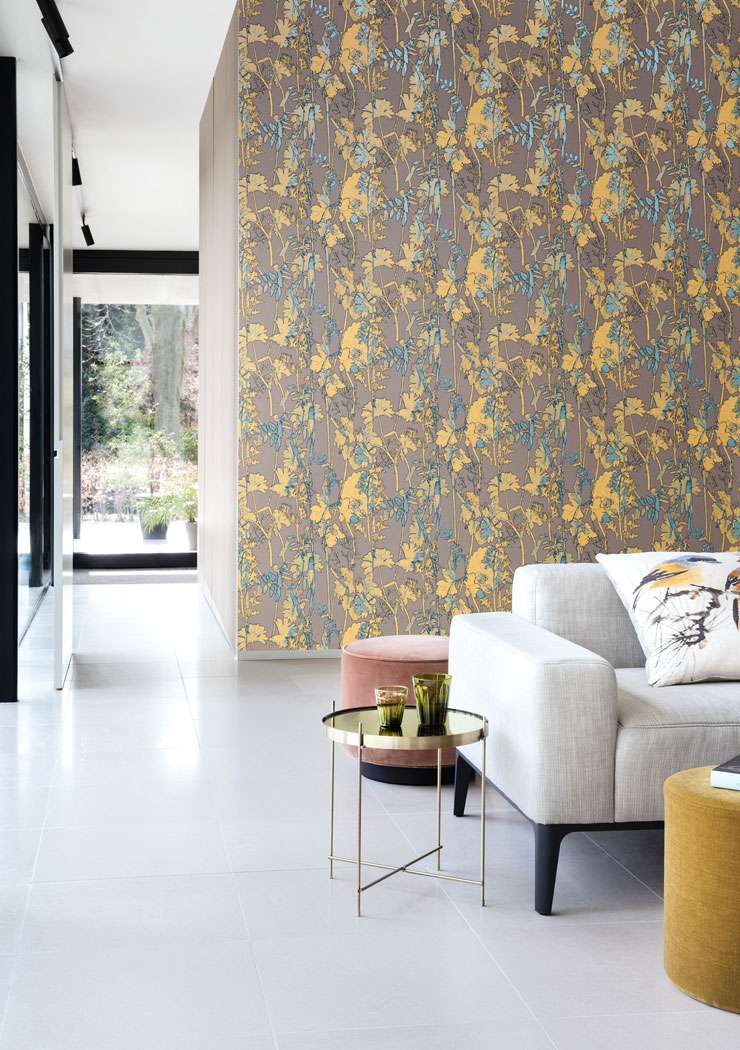While many of us assume that wallpaper fell out of fashion after its huge heyday in the swinging 60s and super-cool 70s, that’s not strictly true.
Karen Warman, marketing manager at Resene. says that wallpaper never went away and was still used in the 1980s and 90s, but often in neutral colours, with little if any pattern, so it was very subtle, and you wouldn’t necessarily have noticed it.
In the 21st Century, things began to change.
“With new printing and design techniques available, wallpapers became more edgy and more intricately designed,” Karen says.
Start your property search
“Initially this started as a statement thing and these bold wallpapers tended to be used on just one wall. Now, they are also working their way across multiple walls to become a broader feature.”
She says that plain and lightly textured wallpapers are still popular, but kiwis are becoming more adventurous.
“Wallpaper provides a great means to express yourself and your personality and you can easily change it in a few years’ time if a fresh design catches your eye.”
While wallpapering in the old days could be quite a fiddle, and a bit hit and miss when it came to hanging the paper up after pasting it, Karen Warman says that modern papers are easy to apply and you’re very unlikely to end up with a twisted mess on the floor.

Resene's Kosmos collection. Photo / Supplied
“Wallpaper hanging has certainly come a long way and these days, with many papers, you simply paste the wall and then put up the wallpaper – easy!
“We recently ran a challenge with people who had never used wallpaper before and got them to paper a small wall, which they managed with no trouble at all, in just a few minutes.”
In terms of pattern, botanical themed wallpapers with flora and fauna motifs are wildly popular right now. A vivid floral might incorporate a sleek jaguar, or even a snake.
Because these patterns are so bold and busy, less adventurous decorators are using them in places such as the powder room, where they still make a statement and provide an excellent conversation starter when guests come over.
Karen Warman has noted other growing trends in wallpaper, including some which reference the art deco patterns of the 1930s.
“As a counterpoint to edgy industrial looks, art deco revival offers the opportunity to bring an abundance of refined luxury and opulent elegance to our interiors,” she says.
“You’ll see high-contrasts between black and white with strong vertical linear forms – as well as round, exaggerated curves.
“Geometric details are big along with jewel toned velvet, veiny marble, brushed brass and high-gloss finishes.”
Wallpaper can be very expensive and while there are plenty to choose from in the under $100 price point it’s not unusual to pay upwards of $300 per roll. Some very elaborate papers by designers such as Christian Lacroix will set you back around $1600 per roll. You can find these exquisite designs at upmarket retailers such as Allium, in Auckland’s Newmarket.
The reason for high-priced wallpapers is partly that there are no large-scale wallpaper manufacturers in New Zealand so papers must be imported, and also, while modern technology has made wallpaper production easier, it’s still a time-intensive process and the inks that are used can be very pricey.
For this reason, interior designers will still often suggest that you use a particularly top-end paper on a single feature wall. Not only does this save money now, but you will also feel more inclined to change it again in a year or two and introduce something completely different.
Modern adhesive wallpapers can be much more -pocket-friendly with prices starting in the $50 range and they’re easily accessible from online suppliers such as Fishpond. Essentially, these are large stickers, and they’re surprisingly simple to apply. Adhesive wallpaper is priced by the metre which means it’s twice as wide as a standard wallpaper.
Its biggest advantage is the fact that it’s removable and won’t damage the wall underneath. Adhesive wallpapers are ideal for children’s rooms, partly because they’re easy to clean with a damp cloth and also because baby patterns won’t necessarily appeal to older children. They’re also great if you’re a tenant and want to make your own mark on a rental.
What’s more, you can also use adhesive paper to reinvent an old piece of furniture, injecting new life and having fun in the process.










































































